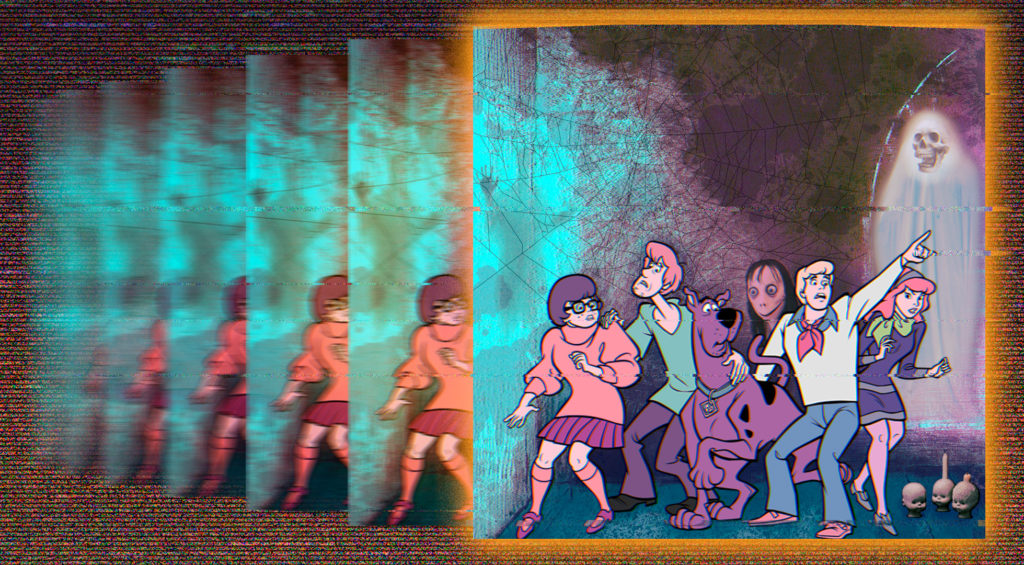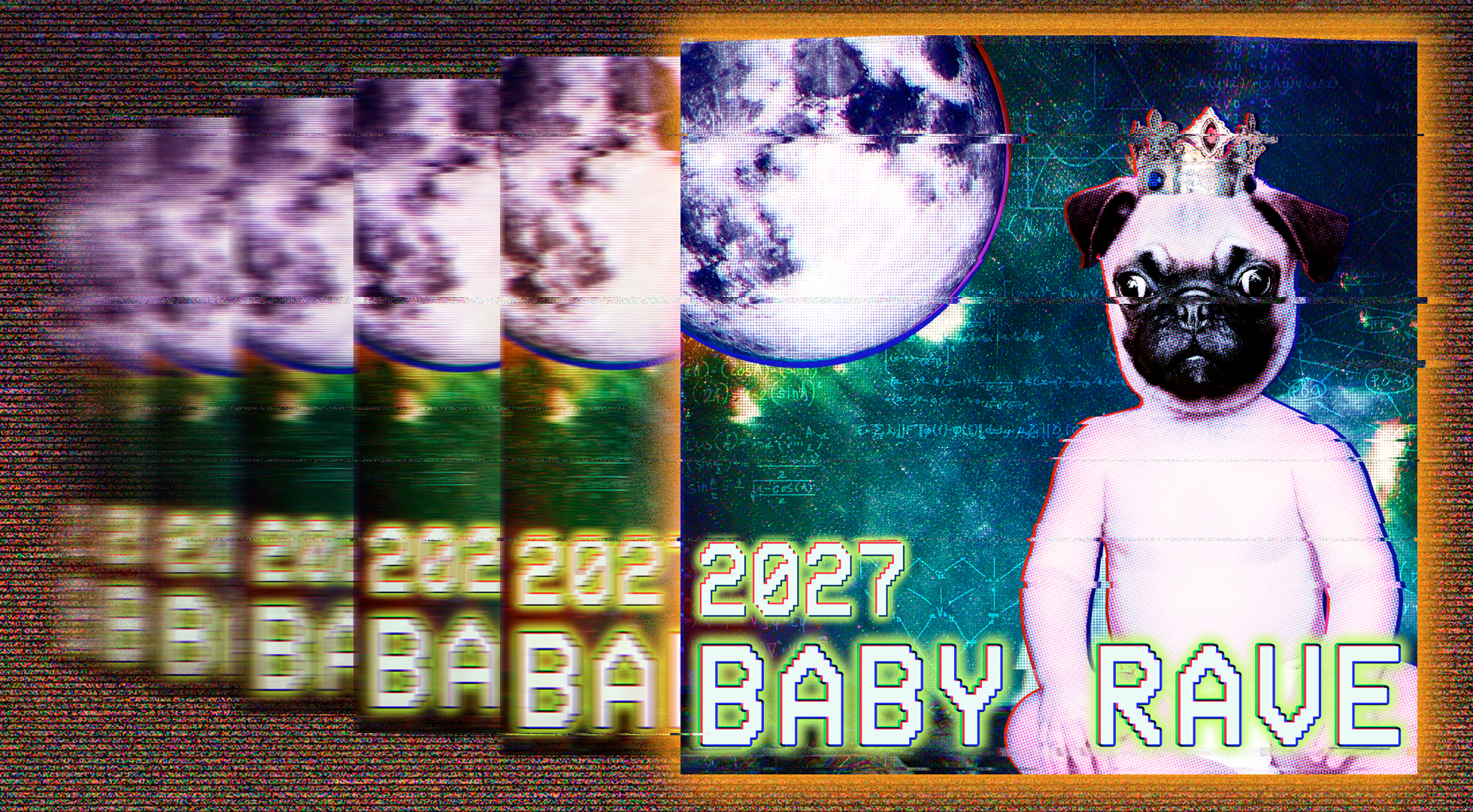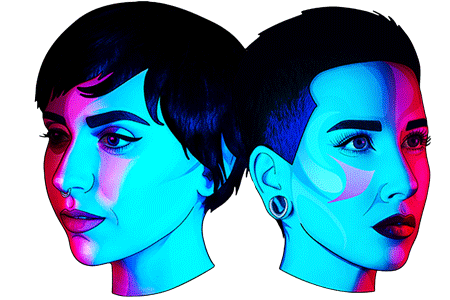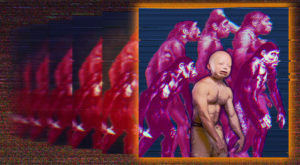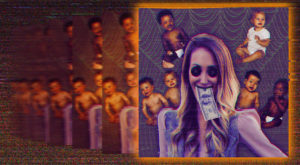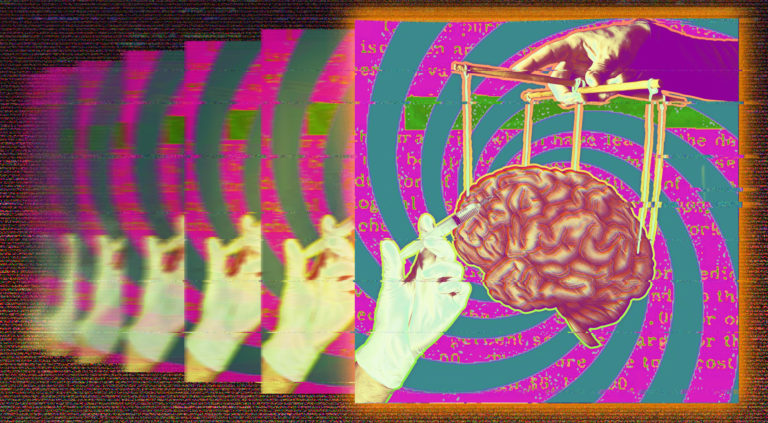The overwhelming consensus of annoyed scientists everywhere is that ghosts just aren’t a thing. Their existence is impossible to falsify and ghost hunting has been thoroughly debunked and labeled a pseudoscience. Over the centuries, many people have tried to prove the existence of spirits only to come up empty-handed and yet 45% of Americans still believe in ghosts and paranormal phenomenon. In this episode, we explore what makes people think ghosts are real.
With 45 percent of Americans expressing a belief in ghosts, perhaps it’s unsurprising that many Americans also believe that ghosts and spirits can come back to haunt certain places on Earth. About four in 10 (43%) US adults say they think ghosts can come back and haunt people or places. Women (51%) are more likely than men (35%) to hold this belief. More than one-third of Americans (36%) say that they have personally felt the presence of a spirit or ghost. Once again, women (41%) are more likely than men (31%) to say that this has happened to them. Just over one in ten (13%) Americans say that they have communicated directly with a ghost or spirit of someone who has died.
A (Really) Short History of Ghosts
In folklore, a ghost (sometimes known as an apparition, haunt, phantom, poltergeist, shade, specter or spectre, spirit, spook, and wraith) is the soul or spirit of a dead person or animal that can appear to the living. In ghostlore, descriptions of ghosts vary widely from an invisible presence to translucent or barely visible wispy shapes, to realistic, lifelike forms. The deliberate attempt to contact the spirit of a deceased person is known as necromancy, or in spiritism as a séance.
The belief in the existence of an afterlife, as well as manifestations of the spirits of the dead, is widespread, dating back to animism or ancestor worship in pre-literate cultures. Certain religious practices—funeral rites, exorcisms, and some practices of spiritualism and ritual magic—are specifically designed to rest the spirits of the dead. Ghosts are generally described as solitary, human-like essences, though stories of ghostly armies and the ghosts of animals rather than humans have also been recounted. They are believed to haunt particular locations, objects, or people they were associated with in life.
In many cultures, malignant, restless ghosts are distinguished from the more benign spirits involved in ancestor worship.
Ancient Beliefs Shape Modern Experiences
Ancient Egypt

There are many references to ghosts in Mesopotamian religions – the religions of Sumer, Babylon, Assyria, and other early states in Mesopotamia. Traces of these beliefs survive in the later Abrahamic religions that came to dominate the region. Ghosts were thought to be created at time of death, taking on the memory and personality of the dead person. They traveled to the netherworld, where they were assigned a position, and led an existence similar in some ways to that of the living. Relatives of the dead were expected to make offerings of food and drink to the dead to ease their conditions. If they did not, the ghosts could inflict misfortune and illness on the living. Traditional healing practices ascribed a variety of illnesses to the action of ghosts, while others were caused by gods or demons.
There was widespread belief in ghosts in ancient Egyptian culture. The Hebrew Bible contains few references to ghosts, associating spiritism with forbidden occult activities.
Over a period of more than 2,500 years, Egyptian beliefs about the nature of the afterlife evolved constantly. Many of these beliefs were recorded in hieroglyph inscriptions, papyrus scrolls and tomb paintings. The Egyptian Book of the Dead compiles some of the beliefs from different periods of ancient Egyptian history.
The Ghosts of Ancient Greece
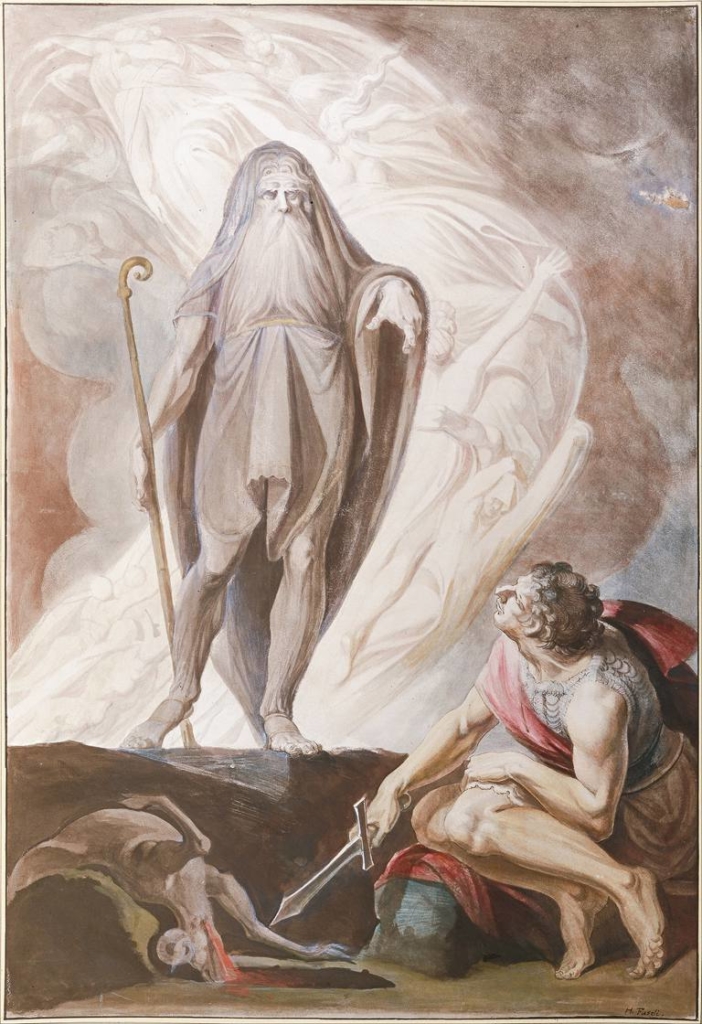
Ghosts appeared in Homer’s Odyssey and Iliad, in which they were described as vanishing “as a vapor, gibbering and whining into the earth”. Homer’s ghosts had little interaction with the world of the living. Periodically they were called upon to provide advice or prophecy, but they do not appear to be particularly feared. Ghosts in the classical world often appeared in the form of vapor or smoke, but at other times they were described as being substantial, appearing as they had been at the time of death, complete with the wounds that killed them.
By the 5th century BC, classical Greek ghosts had become haunting, frightening creatures who could work to either good or evil purposes. The spirit of the dead was believed to hover near the resting place of the corpse, and cemeteries were places the living avoided. The dead were to be ritually mourned through public ceremony, sacrifice, and libations, or else they might return to haunt their families. The ancient Greeks held annual feasts to honor and placate the spirits of the dead, to which the family ghosts were invited, and after which they were “firmly invited to leave until the same time next year.”
A celebrated account of a haunted house from the ancient classical world is given by Pliny the Younger (c. 50 AD). Pliny describes the haunting of a house in Athens, which was bought by the Stoic philosopher Athenodorus, who lived about 100 years before Pliny. Knowing that the house was supposedly haunted, Athenodorus intentionally set up his writing desk in the room where the apparition was said to appear and sat there writing until late at night when he was disturbed by a ghost bound in chains. He followed the ghost outside where it indicated a spot on the ground. When Athenodorus later excavated the area, a shackled skeleton was unearthed. The haunting ceased when the skeleton was given a proper reburial.
In the 5th century AD, the Christian priest Constantius of Lyon recorded an instance of the recurring theme of the improperly buried dead who come back to haunt the living, and who can only cease their haunting when their bones have been discovered and properly reburied.
Spiritualism Gettin' in on the Action
Lucrative seances and spirit photography lends new “evidence” for life after death.
Spiritualism is a monotheistic belief system or religion, postulating a belief in God, but with a distinguishing feature of belief that spirits of the dead residing in the spirit world can be contacted by “mediums”, who can then provide information about the afterlife. It was common to think of the “soul” of a person as separate from the body due to the popularization of the philosophical concept of dualism proposed by Descarte, thus it seemed that the soul could continue even after the body died.
During the short time between the invention of the camera and the emergence of Victorian spiritual movements, there was an almost pathological need to validate spiritual ideology with “science”, thus spirit photography became popular. Double processing, using fabric to evoke the pseudo-scientific idea of ectoplasm, and processing anomalies all gave credence to the idea that ghosts were always among us.
Many prominent Spiritualists were women (OG “boss babes”), as working outside the home was next to impossible in any other capacity. By the late 1880s, credibility of the informal movement weakened, due to accusations of fraud among mediums, and formal Spiritualist organizations began to appear.
Psychology of Ghost Sightings
Finding Meaning in Chaos
Our brain is built to make sense of stimuli, so it seems natural to assume it might get some processes wrong in the hunt for a quick solution to a problem. We have to remember that our brains haven’t evolved much in the last 200k years, so it’s still trying to protect us from sabertooth tigers and attempting to figure out why we’re here, how consciousness works, what animates us, and what happens when we die.
Anthropomorphism is another common way that we try to understand events, says Adam Waytz at Northwestern University in Illinois. So we might think that a spirit lies behind a storm or that a demon is causing us to get ill – rather than acknowledging that we have no control over the matter; and if a branch is tapping on your window, you might be more inclined to imagine that it is a ghost sending you a message. Sceptics and believers were asked to view simple animations of moving shapes, while lying in a brain scanner. Paranormal believers were more likely to see some kind of intention behind the movements – as if the shapes were playing a game of “tag” – and this was reflected in greater brain activity in the regions normally associated with “theory of mind” and understanding others’ motives.
Pareidolia is the tendency for incorrect perception of a stimulus as an object, pattern or meaning known to the observer, such as seeing shapes in clouds, seeing faces in inanimate objects or abstract patterns, or hearing hidden messages in music.
People who believe in the supernatural are more likely to see hidden faces in everyday photos – a finding confirmed by another team at the University of Amsterdam, who showed that paranormal believers are more likely to imagine that they had seen a walking figure in random light displays. Believers may have weaker cognitive “inhibition”. That’s the skill that allows you to quash unwanted thoughts, so perhaps we are all spooked by strange coincidences and patterns from time to time, but sceptics are better at pushing them aside. Another paper reported that paranormal believers also tend to have greater confidence in their decisions, even when they are based on ambiguous information.
Nobody is immune. Michael Nees at the Lafayette College in Pennsylvania recently asked a group of students to listen to sound recordings from US ghost-hunting shows. Subtly priming the volunteers with the thought that they were involved in a paranormal study increased the number of voices they reported hearing in the fuzzy recordings – despite the fact that they mostly reported being sceptics.
Reconciling the Ghost in the Machine
Honestly, I think people want to believe in a spirit that works independent of the corporeal form. The idea that some sort of consciousness exists after we die isn’t new, nor is the idea of ghosts, but the desire to have some sort of proof, albeit intangible, seems to drive the belief in ghosts and hauntings.
The ghost in the machine means the consciousness or mind carried in a physical entity. Gilbert Ryle coined the term in his 1949 work The Concept of Mind as a criticism of René Descartes. Descartes believed in dualism, the idea that the human mind is not physical, that it exists independently of the human brain. Ryle referred to this idea as the ghost in the machine. He believed that human consciousness and mind are very dependent on the human brain. The term ghost in the machine has come to also describe the supposed consciousness in a device that behaves as if it has a will that is independent of what the human operator wants the device to do.
Spiritual Beliefs Impact Supernatural Beliefs
Some psychologists have characterized religious beliefs as pathological, seeing religion as a malignant social force that encourages irrational thoughts and ritualistic behaviors.
Researchers who study the psychology and neuroscience of religion are finding that religion may, in fact, be a byproduct of the way our brains work, growing from cognitive tendencies to seek order from chaos, to anthropomorphize our environment and to believe the world around us was created for our use.
Religion has survived, they surmise, because it helped us form increasingly larger social groups, held together by common beliefs.
Children as young as age 3 naturally attribute supernatural abilities and immortality to “God,” even if they’ve never been taught about God, and they tell elaborate stories about their lives before they were born, what Barrett calls “pre-life.”
These cognitive tendencies served other adaptive purposes than believing in religion and supernatural elements. For example, because people are quick to believe that someone or something is behind even the most benign experiences, they may perceive the sound of the wind rustling leaves as a potential predator. In evolutionary terms, it was probably better for us to mistakenly assume that the wind was a lion than to ignore the rustling and risk death.
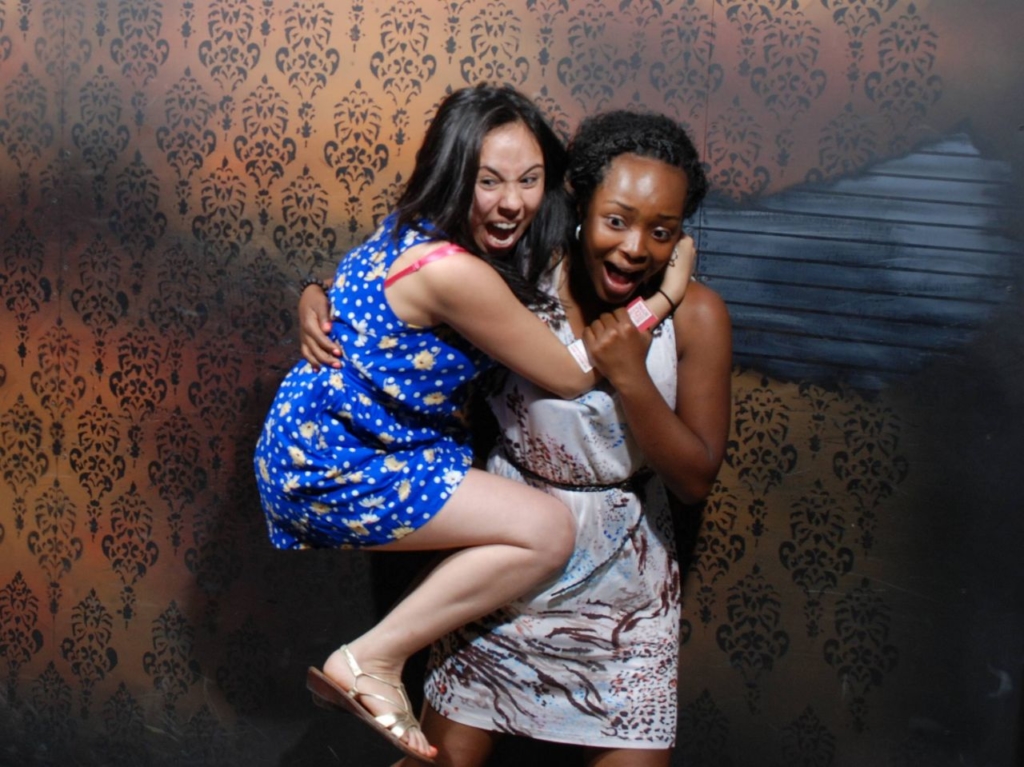
Humans Enjoy Fear
The amygdala causes the flight/fright/freeze response. It works in milliseconds, faster than you can think consciously. Symptoms of the fear response include – palms sweating, pupils dilating, heart rate increases, breath speeds up, muscles tense, attention focuses, dopamine and adrenaline is emitted from the brain to prepare you for action. These are the exact same responses as extreme excitement. If you are safe and experiencing a predictable effect, you can enjoy the fear. Similarly, the rush of adrenaline is associated with long distance runners, giving them the high.
People enjoy feeling fear through threat simulation (horror movies, haunted house attractions, “supernatural” experiences) because of the reinterpretation of the fear response to being one of excitement. You’ve survived a scary thing and the relief is intoxicating.
Horror, Personality, and Threat Simulation: A Survey on the Psychology of Scary Media
- Findings support the hypothesis that horror can function as adaptive threat simulation, which may be particularly attractive to individuals who desire emotional and intellectual stimulation
- Suggests that involvement in horror media is a form of benign masochism.
- According to the theory of benign masochism, pioneered by the psychologist Paul Rozin, initially aversive activities may through hedonic reversal become pleasurable. Examples are ingesting chili peppers and listening to sad music. Steven Pinker has suggested a functional underpinning for the “paradoxical pleasures” of benign masochism: These paradoxical pleasures include consuming hot chili peppers, strong cheese, and dry wine, and partaking in extreme experiences like saunas, skydiving, car racing, and rock climbing. All of them are adult tastes, in which a neophyte must overcome a first reaction of pain, disgust, or fear on the way to becoming a connoisseur. And all are acquired by controlling one’s exposure to the stressor in gradually increasing doses. What they have in common is a coupling of high potential gains (nutrition, medicinal benefits, speed, knowledge of new environments) with high potential dangers (poisoning, exposure, accidents). The pleasure in acquiring one of these tastes is the pleasure of pushing the outside of the envelope: of probing, in calibrated steps, how high, hot, strong, fast, or far one can go without bringing on disaster. The ultimate advantage is to open up beneficial regions in the space of local experiences that are closed off by default by innate fears and cautions
- Through such imaginative absorption, people get to experience strong, predominantly negative emotions within a safe context. This experience, which serves as a way of preparing for real-world threat situations, may be biologically adaptive in terms of improving the odds of survival in a potentially hostile world (Clasen, 2017). Moreover, such vicarious experience is likely to be especially attractive to individuals with a certain personality profile—conceivably, those high in sensation seeking and openness to experience.
- Enthusiastic Horror Use and Supernatural Horror Use were both associated with higher Paranormal Beliefs. Enthusiastic Horror Use was associated with higher levels of Intellect/Imagination and lower levels of education.
- Previous research has found a relationship between preference for horror film and the personality trait known as sensation seeking defined as a desire for “varied, novel, complex and intense” feelings and experiences
- While frightening media may be initially aversive, people high in sensation seeking and intellect/imagination, in particular, like intellectual stimulation and challenge and expect not just negative but also positive emotions from horror consumption. They brave the initially aversive response to simulate threats and so enter a positive feedback loop by which they attain adaptive mastery through coping with virtual simulated danger.
- Intellect/Imagination is the strongest Big-Five predictor of horror consumption, showing correlations of about the same magnitude as Sensation Seeking. Intellect/Imagination designates a tendency and proclivity for imaginative activity, including cognitive exploration and intellectual stimulation. The factor generally describes people who are intelligent, sophisticated, cultured, imaginative, and creative.
Physical Phenomena Creates Hauntings
Your House is Trying to Kill You
Gas Leaks
Carbon monoxide (CO) is a colorless, odorless, and tasteless flammable gas that is slightly less dense than air. It is toxic to animals that use hemoglobin as an oxygen carrier (both invertebrate and vertebrate) when encountered in concentrations above about 35 ppm, although it is also produced in normal animal metabolism in low quantities, and is thought to have some normal biological functions
Carbon monoxide poisoning is the most common type of fatal air poisoning in many countries.Concentrations as low as 667 ppm may cause up to 50% of the body’s hemoglobin to convert to carboxyhemoglobin. A level of 50% carboxyhemoglobin may result in seizure, coma, and fatality. In the United States, the OSHA limits long-term workplace exposure levels above 50 ppm.
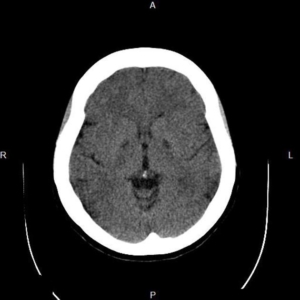
The patient had a history of carbon monoxide poisoning in 1997. She was in a coma for two months and gradually recovered. After 6 months she was able to speak and after 9 months she was then able to walk. Globus pallidus, cerebellum and cerebral cortex are hypodense.
– Radiopedia
As a colorless, odorless gas, carbon monoxide (CO) is very difficult detect. The symptoms of CO-poisoning include weakness, nausea, dizziness, confusion, blurred vision, and hallucinations before loss of consciousness and death. These effects are due to a lack of oxygen because our red blood cells absorb CO faster than they do oxygen. The oxygen that is normally in our blood gets replaced with CO molecules, which blocks the path for any new oxygen to enter.
Mold toxicity
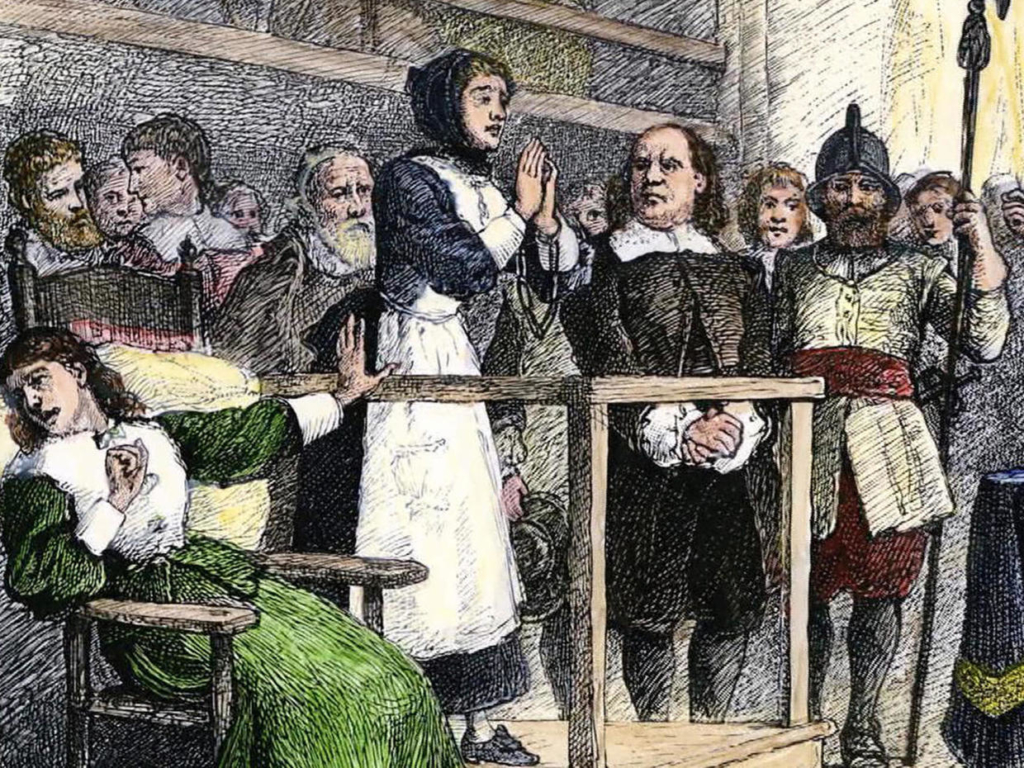
The toxin-producing “black mold” Stachybotrys, as well as and other neurotoxic molds, including Aspergillus, Chaetonium, and Wallemia can have a dramatic effect on the brain and behavior. There are 2 main effects of mold exposure: the physical airway irritating effects like allergies, cough and fatigue, and the more concerning effects on the central nervous system (CNS) and the brain. CNS symptoms can include brain fog, inability to concentrate, depression, sleep disorders, anxiety, irritability, headache, and confusion.
It is estimated that half of the buildings in the United States may be “WDB”, meaning water damaged buildings. Construction techniques in the United States turn out to be prime ground for growing mold and fungal organisms. Mold and fungi thrive on drywall, wood and other soft materials and need only a bit of humidity and a dark environment to thrive. If you see a stain on the ceiling or the wall there is very likely an associated hidden mold growth. This is not the type of mold that you see on the shower wall, but rather it is lurking behind the walls and in air ducts, crawl spaces, and attics, etc.
One historic example of this phenomenon, scientists now believe, is the madness that prevailed in the late 1600s in Salem, Mass. where ergot, a hallucinogenic fungus, infected the rye crops that went into rye bread. Ergot contains lysergic acid, a key compound of the hallucinogenic drug LSD. This tiny fungus and its wild effects on the rye-bread-eating women may have led to the Salem witch trials.
In 1976 Linnda Caporael offered the first evidence that the Salem witch trials followed an outbreak of rye ergot. Ergot is a fungus blight that forms hallucinogenic drugs in bread. Its victims can appear bewitched when they're actually stoned. The victims of ergot might suffer paranoia and hallucinations, twitches and spasms, cardiovascular trouble, and stillborn children. Ergot also seriously weakens the immune system.
It's All in Your Head (& Body)
Common Physical & Psychological Contributors
I’m consistently amazed by how complex and sometimes faulty our brain is, and the biggest shock for me has been to find out that humans hallucinate WAAAAAAAY more than you might expect. While most hallucinations are quickly made sense of through other processing, there’s a lot of physical, visual, and emotional stimulation that we simply can’t process away.
“Your brain is constantly making up its own reality whether it receives actual reality-driven input from your senses or not. In the absence of sensory input, your brain's own world making machinations keep on truckin' nevertheless."
Neuroscientists Susana Martinez-Conde and Stephen L. Macknik
Faulty Brain Processing
The Brain uses prior expectations to inform its interpretation of conscious experiences. All optical illusions are a result of the brain making a “best guess” of what it is experiencing, and those guesses aren’t always accurate and are subjective based on the previous experiences, beliefs, and abilities of the person who has the brain.
There are two general processes involved in sensation and perception. Bottom-up processing refers to processing sensory information as it is coming in. Top-down processing, on the other hand, refers to perception that is driven by cognition. Your brain applies what it knows and what it expects to perceive and fills in the blanks, so to speak. First, let us look at a visual example:
In the vision field, the detection of visual signals, or photons of light, hitting the retinas is known as “bottom-up” processing. The brain must then interpret and make inferences about these signals. Incidentally, our brains are impressively good at doing this. Without your even being aware of it, visual centers in your brain are right now receiving impulses generated by photons of light reflecting onto your retinas and making predictions about what you’re sensing based on your expectations of what’s real and possible, correcting for anything that seems impossible. This correction is a fascinating feature of visual perception and is known in the field as “top-down” visual processing. Normal visual perception is the optimal combination of bottom-up input and top-down correction. Normally, what we expect to see, what we “think” we see, matches what’s actually there in front of us. But sometimes it doesn’t.
The BDII is a beautiful example of your brain overriding actual visual input. This illusion demonstrates that when you’re presented with a familiar 3D object (think of a face) that has been inverted so that it’s now concave (now visualize a hollow mask), your brain’s visual system so strongly expects the object to appear convex that it automatically “corrects” the unusual input, creating an illusion more consistent with past experience.
When examined via fMRI, schizophrenic brains undergoing the BDII test showed different connectivity patterns than non-schizophrenic brains. This means that the diseased brain has different strategies for minimizing visual errors. It “overweights sensory evidence” at the expense of internal correction. To use more technical language, the schizophrenic brain tends to rely more heavily on bottom-up processes, while the normal brain relies on top-down counter-balancing to correct implausible visual stimuli, making it “see” the illusion.
There are similar effects in the way the brain processes sounds, especially when you tie in what you are expecting to hear in certain spooky scenarios. These two videos from ASAPScience illustrate some inconsistencies in the way our brains process sound information.
Recreating ghostly touch
Endurance athletes, polar explorers, and people with neurological or sleep disturbances all report the feeling of an unseen force in the room with them. Researchers examined patients who reported feeling this through MRIs and found unusual activity in areas where different lobes of the brain met.
They recreated the feelings in otherwise “normal” adults (who didn’t report feeling presences) by having them operate a machine that would poke them in the back. It literally looks like a robot hand and the person can move it up or down and side to side, so they can poke themselves anywhere on their back. The researchers introduced a slight delay in the reaction of the mechanical hand and continued the test for a while. All test subjects reported feeling at the very least one disembodied presence in the room, with one subject reporting 4 different entities in the room. It’s caused by a glitch in the brain’s ability to translate the signals from one lobe of the brain to another.
Inattentional blindness
Inattentional Blindness is described as hyper-focus on one thing to the detriment of being able to take in other details.
Remember that old chestnut of a video? It’s a commonly cited example of inattentional (or selective) blindness.
“Memory does not work like a video camera,” says Christopher French. He is a psychologist in England at Goldsmiths University of London. You only remember things you’re paying attention to. Some people are more likely to become absorbed than others. And these people also report higher levels of paranormal beliefs, he says, including beliefs in ghosts.
In one 2014 study, French and his colleagues found that people with higher levels of paranormal beliefs and higher tendencies to get absorbed are also more likely to experience inattentional blindness. They also tend to have a more limited working memory. That’s how much information you can hold in your memory at once.
Sleep deprivation
Random horrifying facts about sleep deprivation.
- The protein beta amyloid builds up in the body as a result of sleep deprivation – this accumulation of the protein has been found to cause dementia in people with Alzheimers. The beta-amyloid protein comes in several different molecular forms that collect between neurons. It is formed from the breakdown of a larger protein, called amyloid precursor protein. In the Alzheimer’s brain, abnormal levels of this naturally occurring protein clump together to form plaques that collect between neurons and disrupt cell function.
- Even one hour less sleep a night increases your risk for numerous kinds of cancer.
- Nighttime shift work, because of sleep-wake rhythm disruption, has been classified as a carcinogen.
- Less sleep impacts cardiovascular health.
- Daylight savings time is linked with a 24% increase in heart attacks the following day because of sleep disturbances.
- 16 hours of wakefulness creates mental and physiological deterioration, after 24 hours your mental faculties are as bad as someone who is drunk.
- More people are killed by drivers with sleep deprivation than drunk drivers.
- Sleep deprivation amps up the amygdala, the locus coeruleus becomes over active and because the prefrontal cortex is bi-passed as a result of a lower cognitive ability with sleep deprivation, you don’t have a way to calm yourself down. The locus coeruleus is a nucleus in the pons of the brainstem involved with physiological responses to stress and panic.
- Sleep deprivation of 3-4 days causes hallucinations.
- Longest documented lack of sleep was 11 days, survived because he was a teenager, he suffered hallucinations, physical and visual, and was described as cognitively disfunctional.
- Lack of sleep disturbs visual processing, which results in false perceptions that can manifest as hallucination, illusion, or both.
- Fatal familial insomnia (FFI) is a rare genetic degenerative brain disorder. It is characterized by an inability to sleep (insomnia) that may be initially mild, but progressively worsens, leading to significant physical and mental deterioration. FFI usually begins with mild insomnia, mild dementia and muscle spasms. Sufferers may also notice themselves sweating profusely, and their pupils may shrink to pinpricks. As the disease progresses, the afflicted lose all ability to sleep and may experience rapid weight loss. They begin to live in a trance-like state, seemingly caught between sleep and waking, though it offers no respite. Dementia and panic attacks steadily worsen, and the patient eventually slips away. The average survival time is 18 months. There is a documented example from the 1980s of FFI in which a man and his two sisters all died one after another.

These images show how the emotional part of the brain (amygdala) is much more active when deprived of sleep. Top brain images show the response of the amygdala, circled in green, for study participants who viewed negative images after a normal night of sleep. Brain images below show the amygdala, circled in red, for participants who viewed negative images after 35 hours of no sleep. (Courtesy Matthew Walker/UC Berkeley)
In the psychotic state, the brain has trouble balancing the interpretation of sensory input and the generation of correct “guesses.” This suggests that something similar may be happening in the sleep deprived state, leading to the susceptibility to hallucinate, or “guess” something to be there that’s not actually there.
Hallucinations
Hallucinations access the same brain processes as visual processes, which isn’t true of imagining. There are a lot of explanations around hallucinations that have nothing to do with mental illness, and yet people want to believe if they aren’t schizophrenic, whatever they see or experience is truly happening. Our brains create reasoning based on experiences and preconceived notions of what is possible in the world, so if you believe that ghosts and hauntings are real, you are more likely to experience them when other people might feel anomalous but explainable physiological issues.
Charles Bonnet Syndrome defines when people with partial or full blindness experience sudden onset of extremely vivid visual hallucinations as a result of the visual cortex being under-stimulated. The part of the brain dealing with vision essentially goes OH SHIT I HAVEN’T WORKED OUT IN A WHILE TIME TO GET SWOLE and produces a ton of images. It’s important to note that only people who have previously had vision can have this syndrome. Similar syndromes exist along all physical sensations including auditory hallucinations in deaf people, scent hallucinations for people who can’t smell, and phantom limb hallucinations from people who have had amputations.
You can experience similar hallucinations in sensory deprivation tanks. Absent any outside input, the brain scrambles to figure out what is going on and will create visual, auditory, and even physical hallucinations to compensate. There is a famous neurologist Oliver Sacks who spoke often of hallucinations and had direct experience working with people who had Charles Bonnet Syndrome. He directly related our current notion of ghosts with earlier “visions” of angels and demons by religious folks.
. . .
Bereavement Hallucinations are common and seem to be a productive part of the grieving process. The person might see, hear, or feel the presence of their loved one and interpret it as a sign that they are at peace and that the grieving person can let them go.
"Dreaming While Awake", Mike JayFrom the perspective of the neurosciences, such hallucinatory stereotypes are privileged, if cryptic, glimpses into the deep structure of the brain: the fact that they can be generated by so many unrelated conditions suggests hardwired perceptual structures that reliably manufacture them. But they also have a cultural life – and, for quintessentially private mental events, a remarkably well-defined social history. They are assigned distinct meanings in different cultures: in many, their familiar appearance is taken as evidence not of their neurological basis but of their independent existence in a transpersonal or spirit world. The phenomenon appears to be consistent through history – the oldest example typically cited in the literature is the ‘little strangers’ who appeared to St Macarius the Elder in his desert solitude around 350 CE – but susceptible to varied cultural interpretations: in Ireland such figures might be described as leprechauns, in Norway as trolls and so on. Do these archetypes draw on a private but universal mental landscape? If so, we might square the circle of nature and culture with the suggestion that they have a basis in neurology but their interpretation shifts with the times: the fairies of old now manifesting more commonly as aliens.
Lilipution hallucinations are also surprisingly common. This is where you see very small people, often described as fairies, elves, etc.
Night Terrors are another common hallucination that usually happens when people have other neurological, mental or sleep disorders but can also happen in times of stress or as a result of sleep deprivation. Essentially, during sleep your brain produces hormones to prevent you from acting out your dreams. There is a parasomniatic disorder called REM Sleep Disorder in which the person doesn’t produce the hormone to immobilize them during sleep and, as a result, they act out their dreams. Both Night Terrors and Sleepwalking are similar parasomniatic disorders, but they focus on arousal – you are between states of consciousness and can experience the world to some degree (which is how sleep walkers can move through a house without falling over everything). During Night Terrors, you brain and body come online, so to speak, at different times so while you might be conscious with your eyes open, your body is still effectively paralyzed sometimes for a few minutes. Presences are commonly felt, there can be the feeling that someone is sitting on your chest or holding you down, and, especially at night, your brain reacts to this stimulus by producing some sort of explanation of what is happening, so you might even experience visual or auditory hallucinations.
Environmental PhenomenaCreates Paranormal Phenomena
Electromagnetic Fields (EMFs)
Electromagnetic fields are a natural phenomena and they exist around everything, some common examples: electronics, fault lines, the earth’s core, and thunderstorms.
What makes the various forms of electromagnetic fields so different?
One of the main characteristics which defines an electromagnetic field (EMF) is its frequency or its corresponding wavelength. Fields of different frequencies interact with the body in different ways. One can imagine electromagnetic waves as series of very regular waves that travel at an enormous speed, the speed of light. The frequency simply describes the number of oscillations or cycles per second, while the term wavelength describes the distance between one wave and the next. Hence wavelength and frequency are inseparably intertwined: the higher the frequency the shorter the wavelength.
What do these electromagnetic fields (supposedly) do?
Some suggest that these fields can interact with the human brain, causing hallucinations, dizziness or other neurological symptoms. Researchers have theorized that this is one of the reasons people report more ghostly activity at night. Because of the way the solar wind interacts with the Earth’s magnetosphere, the planet’s magnetic field stretches out on the side that’s in darkness. Some researchers hypothesize that this expanded field interacts more strongly with people’s brains.
Medical researchers have also studied the effects of electrical fields on people’s brains. Electrical stimulation to the angular gyrus of the brain, for example, can cause the sensation of someone behind you mimicking your movements. Electrical stimulation to different parts of the brain has also caused people to hallucinate or seem to have near-death experiences.
Infrasound
First, some definitions.
Hertz is the standard measure of the frequency of oscillations in a wave motion. The frequency is 1 Hz when one oscillation occurs in one second. These oscillations change the pressure of the air surrounding objects which is processed by the ear as sound.
Decibels measures loudness of a sound.
Resonance is a scientific principle in physics that works with electromagnetic, acoustics, and engineering mechanics.
Resonance – occurs when a given system tuned to a certain frequency begins to oscillate or amplifies the presence of a preferential external frequency.
Those frequencies that maximize or amplify a given object tuned to a specific frequency are called resonant frequencies. Together, two frequencies have the power to influence each other, if both are tuned in concordance for resonance.
By testing the response of the human body on a vibrating platform, many researchers found the human whole-body fundamental resonant frequency to be around 5 Hz. However, in recent years, an indirect method has been prosed which appears to increase the resonant frequency to approximately 10 Hz. As the human body has the ability to resonate, there are frequencies that affect us physically and mentally. Something to think about – the eyeball is, essentially, gelatinous in the middle so if a strong frequency disrupted our resonance, the inside of the eyeball would vibrate, creating visual stimuli that our brain would then try to make sense of.
Humans can hear sounds at frequencies from about 20hz to 20k hz, though our hearing is best from 1k to 5k hz, which is where human speech tends to reside. Human hearing changes as we age, which children hearing more frequencies and older adults hearing less and typically losing high frequencies.
The term ‘infrasound’ defines itself as the inaudible frequency range below the human bandwidth of around 20Hz.
what subsonic frequencies do to humans
Infrasound has been utilised as a means of sonic warfare for physical human impact, dating back to World War 1. Exposure to levels above 80db between 0.5Hz and 10Hz causing these possible vibrational movements within the ear’s functions, are said to cause psychological changes such as fear, sorrow, depression, anxiety, nausea, chest pressure and hallucinations. During the Vietnam War, the U.S. launched a psychological warfare project on the Viet Cong that combined their traditional funeral music, lamentations of a wandering ghost pleading with the soldiers to leave the battlefield or risk wandering the grounds in misery forever (a core belief in Vietnamese culture), and infrasonic tones. Needless to say, the Viet Cong were not super stoked about this fucked up tactic and would respond with heavy fire.
Some big cats produce subsonic sounds that are imperceptible to humans; the best example is the tiger roar. Tigers are the most vocal species of big cat but we can’t hear all their noises as some are in frequencies imperceptible to human ears. Survivors of tiger attacks commonly report being immobilized by the roar and there is some speculation that the infrasound contained in the roar stuns prey.

In nature, infrasound is common. Elephants can trumpet to one another, and whales can communicate at great distances by generating these tones. One infrasonic frequency of particular interest is centered around 18 Hz and is generated by the unusual shape, stretch, and shear-ability in the folds of a Siberian tiger’s vocal chords.
Based on studies by bio-acoustic specialist Dr. Elizabeth Von Muggenthaler, of the Fauna Communication Research Institute, and Edward J Walsh of the Boys Town National Research Hospital, tigers have been observed to emit growls and roars for a variety of reasons such as: marking territory, attracting mates, and scaring off rivals. They can generate sounds as loud as 114 dB in the audible spectrum, but the tone at 18 Hz is interesting because the combination of the infrasonic tone with the roar within the higher spectrum may cause momentary paralysis to animals within earshot.
Video of a diver experiencing paralyzation after a click.
Sperm whale clicks are known to paralyze the divers that study them because of the force of the the extreme sounds they generate. Their heads are perfectly designed to amplify sound and push it out to resonate off of things around them with the largest males generating more than 200 db. Interestingly enough, the whales who regularly interact with divers seem to understand that humans are more fragile than them and will lessen their clicks as much as possible to reduce the impact. Still, people have reported temporarily losing the use of an arm because they put their hand out during a click.
This video is worth the watch.
infrasonic 17 hz tone experiment
On 31 May 2003 a group of UK researchers held a mass experiment, where they exposed some 700 people to music laced with soft 17 Hz sine waves played at a level described as “near the edge of hearing”, produced by an extra-long-stroke subwoofer mounted two-thirds of the way from the end of a seven-meter-long plastic sewer pipe. The experimental concert (entitled Infrasonic) took place in the Purcell Room over the course of two performances, each consisting of four musical pieces. Two of the pieces in each concert had 17 Hz tones played underneath.
In the second concert, the pieces that were to carry a 17 Hz undertone were swapped so that test results would not focus on any specific musical piece. The participants were not told which pieces included the low-level 17 Hz near-infrasonic tone. The presence of the tone resulted in a significant number (22%) of respondents reporting feeling uneasy or sorrowful, getting chills down the spine or nervous feelings of revulsion or fear.
“Low frequency sound can cause people to have unusual experiences even though they cannot consciously detect infrasound. Some scientists have suggested that this level of sound may be present at some allegedly haunted sites and so cause people to have odd sensations that they attribute to a ghost—our findings support these ideas.”
A similar experiment entitled ‘The Haunt Project’ conducted by the Anomalistic Psychology Research Unit of Goldsmiths College, London, subjected 79 volunteers to a varying array of infrasonic frequencies. The primary analysis of the study cites that “63 (79.7%) of the participants felt dizzy or odd, 9 (11.4%) experienced sadness, 7 (8.9%) experienced terror” (French, Haque, Bunton- Stasyshyn, & Davis, 2009).
suggested relationship to ghost sightings
Psychologist Richard Wiseman of the University of Hertfordshire suggests that the odd sensations that people attribute to ghosts may be caused by infrasonic vibrations. Vic Tandy, experimental officer and part-time lecturer in the school of international studies and law at Coventry University, along with Dr. Tony Lawrence of the University’s psychology department, wrote in 1998 a paper called “Ghosts in the Machine” for the Journal of the Society for Psychical Research. Their research suggested that an infrasonic signal of 19 Hz might be responsible for some ghost sightings. Tandy was working late one night alone in a supposedly haunted laboratory at Warwick, when he felt very anxious and could detect a grey blob out of the corner of his eye. When Tandy turned to face the grey blob, there was nothing.
The following day, Tandy was working on his fencing foil, with the handle held in a vice. Although there was nothing touching it, the blade started to vibrate wildly. Further investigation led Tandy to discover that the extractor fan in the lab was emitting a frequency of 18.98 Hz, very close to the resonant frequency of the eye given as 18 Hz by NASA. This, Tandy conjectured, was why he had seen a ghostly figure—it was, he believed, an optical illusion caused by his eyeballs resonating. The room was exactly half a wavelength in length, and the desk was in the centre, thus causing a standing wave which caused the vibration of the foil.
Tandy investigated this phenomenon further and wrote a paper entitled The Ghost in the Machine. He carried out a number of investigations at various sites believed to be haunted, including the basement of the Tourist Information Bureau next to Coventry Cathedral and Edinburgh Castle.
Sources
I wasn’t as diligent as I should have been about saving links to my sources this go round, so if you are meant to be on this list, please email or comment and I’ll add the link!
- 45% of Americans believe that ghosts and demons exist | YouGov
- Wikipedia – Ghost
- Wikipedia – Operation Wandering Soul
- Audio of “Operation Wandering Soul”
- The science of ghosts | Science News for Students
- What We Know About Ghosts
- A Scientific Approach to the Paranormal | Carol Poppy, TED Talk
- Where Does Your Mind Reside?
- Wikipedia – Infrasound
- Haunted by the past: old emotions remain salient in insomnia disorder
- Black mould in your home can cause terrifying hallucinations of demons & ghosts
- Why do humans hallucinate on little sleep?
- Rotating face mask
- Do Einstein’s Laws Prove Ghosts Exist?
- What Hallucination Reveals about Our Minds – Oliver Sacks – TEDTalk
- Full Presentation – Hallucinations with Oliver Sacks
- Oliver Sacks on 5 Common Types of Hallucinations

